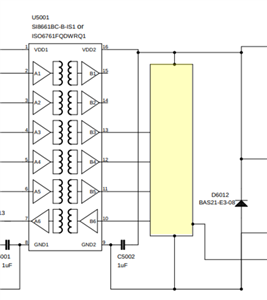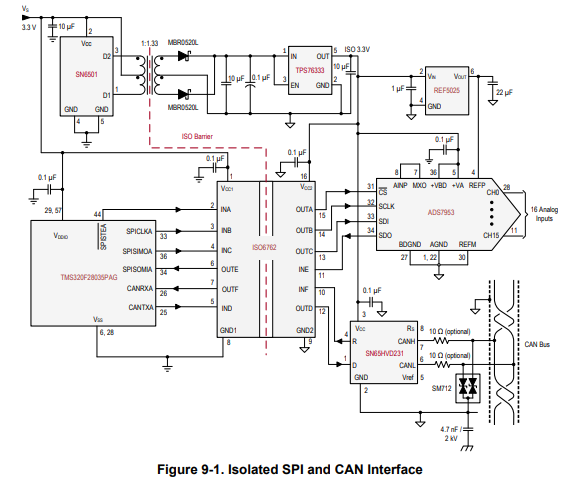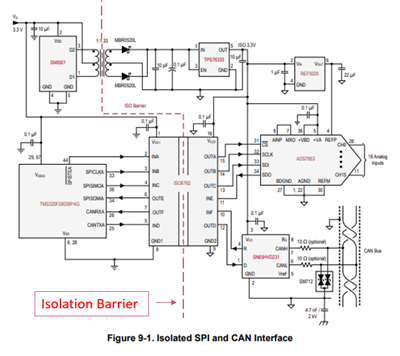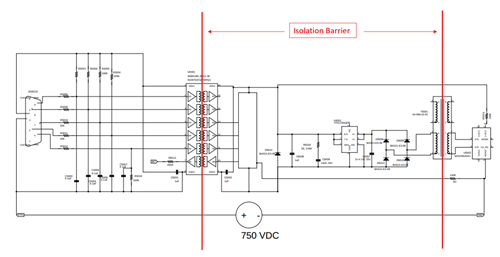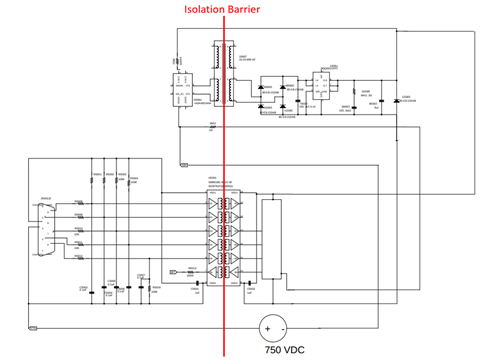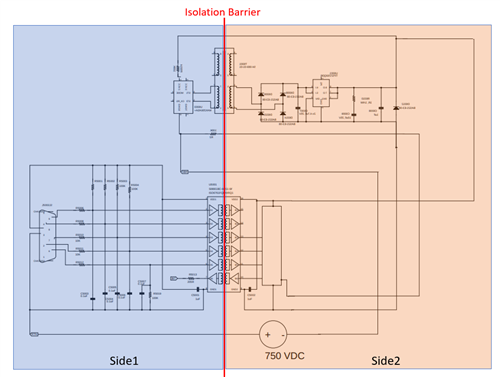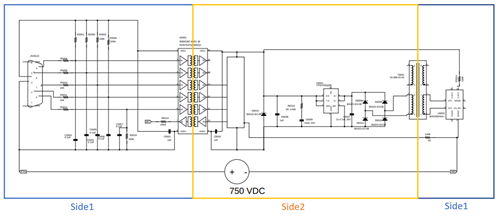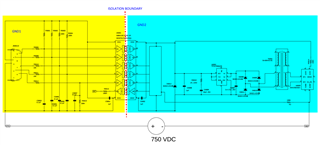Other Parts Discussed in Thread: SN6501, ISO6762
I check the isolation of my complete board by applying 750VDC across the isolated regions.
Often I'm finding the IS6761 being damaged after this test.
This doesn't always happen (the damage) but I have no other clue as to why the ISO6761 is found to be failing.
Ramping up to 750VDC over 10sec, dwell 10sec, ramp down to 0V over 10sec.
What might be happening here?


